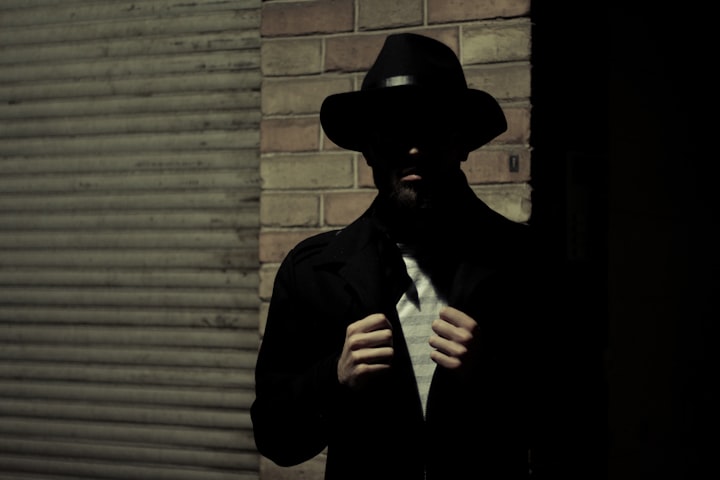
Recently I was listening to a podcast of how to spot liars and this resonated with me, because this is consistent with what I have seen in years of working corporations.
The lady was a special agent and was very experienced in ascertaining whether someone was lying.
We are all liars and those who say they aren’t liars have just told another one.
The funny thing about humankind is that we all have patterns of deception. There are certain indicators that show that we are lying. There are no innovations.
Deny, deny, deny, the first lesson any politician learns.
Liars will most often initially deny something and then distance themself from the person or incident or whatever it is they are lying about. By their denial, they try to deflect the attention of the truth seeker, and they try to remove the object of suspicion from themselves.
Honest people facilitate the conversation and try to find the truth, they are enthusiastic about uncovering the truth. Liars try to distract and create red herrings for the truth seeker.
We should always ‘sweat the small stuff.’
Another tactic that deceptive people use is to offer too much detail. They try to profess their innocence through giving too much detail, but in doing so, they lay a trap for themselves, because when asked to go over the same detail, they expose their lies.
I had a boss who would lie continually to our customers, and he would always overwhelm the customer with ‘facts’. Facts he had often made up on the spot. He would rattle off so much information and not allow the customer to talk, being overbearing, and then pat himself on the back when the meeting was over.
I once received feedback from a very important client that I should tell my boss ‘to come up for air’ once in a while. Did I tell him this? No, I did not, and so to protect my career, I lied. We can also lie through omission. Most lies are not so much lies but half truths. I think that is why before you make a statement in some courts of law, you need to make the statement, “I will tell the truth, the whole truth and nothing but the truth. So help me God.”
What he is saying is a different story to what his body language is saying. Having contradictory body language to what is being stated is a huge red flag that highlights deception and lies. So look out for inconsistencies. Someone saying they agree with something but shaking their head while saying it, is an example of this.
A shifting blink rate is another telltale sign. Someone either blinking more quickly or more slowly when asked a certain question, means that there is a high potential for deception.
When someone uses barrier objects, for instance, they place some type of object between themselves and the questioner, then chances are that they are lying.
Altering vocal tone, from the usual tone that a person adopts, is another potential sign of deception.
Pointing feet towards an exit is another sign that someone maybe trying to be deceptive.
A key point with any observations we make is to always weigh up any observations against the usual behaviour of the person. The changes in usual behaviour is what we are looking for.
Most lies are not so much what they say but what they leave out. This is what we call lying by omission. Liars will leave out parts of the story that don’t suit their lies.
Moving less can also show deception. If someone is more stoic in upper body, by someone who moves a lot, maybe because they are mentally planning their lies so they lose the movement in their body. It takes mental energy to plan lies.
So what is the best way to expose a liar?
You want someone to tell you a story — then you can observe how they react, and you can decipher what they are like. You can then observe their behaviour. In order to do this, you need to ask them open-ended questions like “tell me about… or explain what you were thinking….or describe what happened last night….”
Remain interested and observe. The next step is to funnel the conversation based on what they are telling you. Making statements like. “So you admit you were there on the night… and so on.”
As you go through the story and continue to funnel them right until you get to the point you want them at. It’s a process and as the person speaks, you need to look for inconsistencies.
Is it ever okay to lie?
Sometimes we need to lie, like when we decide we don’t want someone to know certain things about us, especially when asked a very personal question. Usually I find a better strategy is to turn the question back on the questioner and ask them why they want to know? This will get them thinking about their motive for such a question, and they often will not want to admit that motive and just drop the question.
Often we want to save a relationship, and then we lie to preserve that relationship, for instance, your partner loves painting and they think their art is really great, you don’t think their art is good, but you love the way it makes them feel, so you don’t want to dampen their enthusiasm and you care about them, and their happiness.
How do we make someone open up and feel more comfortable?
By giving someone autonomy, like letting them choose their seat, or asking them to choose where to meet. By making them feel more comfortable, you can then broach the tough subject of dishonesty.
How do you create a position of authority in a meeting?
By making a strong suggestion. ‘Why don’t you get a drink of water before we start? Because we are going to be here a while.’ This sets the tone that you are calling the shots.
Give your trust conditionally. Be more reserved about trusting anyone too quickly. Always be more conditional about trust in business and relationships. It takes less effort just to trust someone, but don't trust people freely. They must earn your trust.
Conditional trust — protect yourself from deceivers.
Ask open-ended questions like “tell me about your childhood, your work..” In this way you open up the world of the person, and they feel more like sharing information. They will divulge more if they feel they are in control. Observe and note what is being said.
We summarise the key questions in the acronym TED, which stands for Tell, Explain, Describe. Perhaps that’s why they call that channel ‘TED talk?’
Also, be aware that too much eye contact can mean that someone is a liar. It isn’t always the case that people who make eye contact are honest.
Something else to look out for is a well-manufactured story that is usually a lie too.
Be aware that a truthful person makes spontaneous corrections, unsolicited corrections are more usually the truth. For instance, if someone says “There were six of us, no wait, five of us, John wasn’t there.” Spontaneous correction like that is more often the truth.
Quotes - if someone quotes someone else, they are usually being truthful.
Vagueness, as opposed to a well manufactured and rehearsed story shows dishonesty, in most cases.
Too much of a detailed explanation for an action or denial of an action is more likely to be deceptive. But we still need to be careful, as sometimes people speak like that, so make sure you first decipher the type of communicator they are. Then you can more easily pick up on anomalies. The key is understanding their usual behaviour and then look for changes.
Unresponsive people.
Sometimes you can evoke a response by making an accusation, if the person is very closed, you can get them to open up by defending themselves, but this is only for people who are closed, it is best to try to get someone to relax with you and speak freely.
Also, once they have defended themselves, keep them talking, ‘tell me about yourself, or why did you think that this happened?’ to get them to open up a bit more.
The most important thing to catch a liar is to make them feel at ease and comfortable with you. That is the way you get them to confess or admit to lying.
These two principles are key:
Observe and note somebody’s behaviour in regular relaxed conversation and then look for anomalies, when you ask tougher questions.
Look for anomalies in voice, body position, gestures, speech, tone of voice.
Ask open-ended questions and let the person speak and tell you a story.
About the Creator
Dean Gee
Inquisitive Questioner, Creative Ideas person. Marketing Director. I love to write about life and nutrition, and navigating the corporate world.






Comments
There are no comments for this story
Be the first to respond and start the conversation.